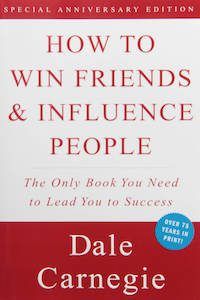The genre focuses on the popular psychology of virtually any aspect of the human experience, from romantic relationships to spirituality. The ultimate goal is to get readers to optimize their self-awareness, so they can take action and achieve satisfaction with their lives. This all sounds wonderful, but how can a publisher relay the goal of a self-help book to readers? Through the book cover of course. There’s a woman looking into the distance, a heavenly cloud with the sun peeping over it, and flowers of course. Unfortunately, these don’t tell readers anything about a book’s content. To be fair, there aren’t many images that loyally relay a 10-step plan to a better life without looking like a PowerPoint slide. The solution seems to be one of two things: an image of the author or text with the author’s name clearly displayed. Think Sheryl Sandberg leaning in with her right hand under her chin and Rachel Hollis kneeling next to a fire hydrant, drenched and smiling.
Judge A Book By Its Cover
As bibliophiles, we are constantly warned to not judge books by their covers. But let’s be honest, everyone does. Why? Because to a reader, a well-designed cover denotes quality. Publishers know this, so they carefully design covers to attract the right readers. For example, a fantasy book might have a warrior standing in front of a magical city, like on The Fall of Gondolin cover. Talk about selling a high fantasy book. Self-help books relay personal philosophies of their authors, who rarely hold degrees in medicine or psychology, begging the question if they are qualified to give the advice in the first place (but that’s a different story). The standard draw that a respected “expert” would have, such as Siddhartha Mukherjee, MD, writing about the history of cancer in The Emperor of All Maladies or Sarah E. Hill, PhD, writing about the effects of birth control on the female brain in This Is Your Brain on Birth Control, does not exist for self-help authors. Instead, the draw is the author’s public reputation and brand. Take Lilly Singh’s book How to Be a Bawse: A Guide to Conquering Life. As a fan of Lilly’s YouTube channel, her face is instantly recognizable to me. On her book cover, she’s staring boldly at the camera, clad in a power suit. Her book is speckled with quotable self-help advice such as “Don’t give up before you even try” and “Words lie; actions can lie too. Consistency speaks the truth.” This is all advice that is in line with her brand of a female being a “bawse.” The book cover reflects this because her confident portrait makes her look like a bawse, making a fan like me inclined to trust her advice.
Who Writes Self-Help Books
Since the self-help industry is largely unregulated, the “experts,” who are mainly life coaches, successful business owners, and celebrities, rely on their reputations to convince audiences that their personal philosophies are sound. The self-help industry has no formal peer review process, so readers must trust the author to give sound personal philosophies. In many cases, the author’s image is recognizable and will attract potential readers, especially previous fans. Because authors aren’t certified experts in self-help, they rely on their relationship with readers. It is that relationship that gives readers confidence in the author’s personal philosophies, like my aforementioned confidence in Lilly Singh. I’ve been a loyal listener of Rachel Hollis’s podcast Rise for two years now, so when her book Girl, Stop Apologizing: A Shame-Free Plan for Embracing and Achieving Your Goals came out in 2019, I was immediately interested because I have a relationship with her work. It also helps that the image for her podcast is her portrait, so I recognized her image the book cover and associated its content with the branded self-help advice that I’ve grown to enjoy on Rise. Despite all the strategizing that goes into developing book covers, all that matters is the content. Two of the most famous self-help books of all time, How to Win Friends and Influence People by Dale Carnegie and The 7 Habits of Highly Effective People: Powerful Lessons in Personal Change by Stephen R. Covey, both with 4 stars from over 400,000 ratings on Goodreads, have arguably unattractive covers. And yet, it has been several* decades since they were published, and both still have consistent readerships. Why? Because the advice is solid. Don’t get me wrong, turning to a book in a time of need is an exercise in trust. I always turn to authors whose work I’ve admired because I trust the quality of their work, and a cover that sports a friendly face is much more appealing than a nonsensical illustration. At the end of the day, a book’s cover is superficial to its content. Editor’s Note: This post originally stated that close to two decades had passed since the publication of How to Win Friends and Influence People by Dale Carnegie. While the anniversary edition was published in 1998, it was originally published in 1936.





